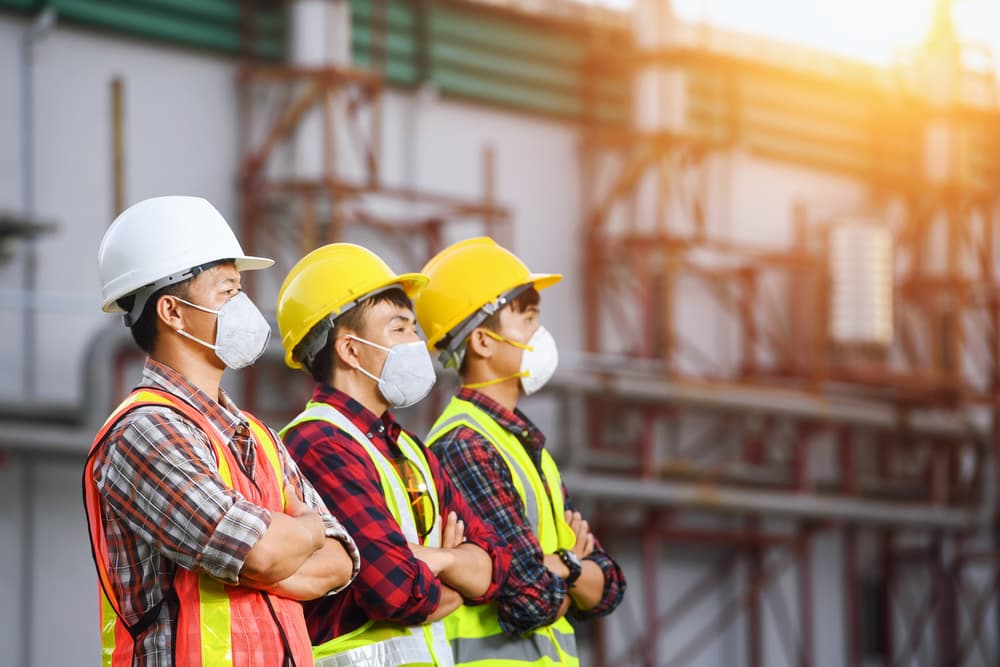How the Construction Industry Can Recover From COVID-19

By Michael Tobias
COVID-19 has ripped into many industries worldwide causing job losses and economic hardship. The impact varies from country to country and region to region, with the poorest of the poor suffering the most. But globally the storylines don’t change much.
Like many other industries, construction has been hard hit, not just because of the dramatic decline in investment in the building sector, and disruption to on-site working situations and conditions, but also because of the impact on material supply chains and availability of labor. It is a vicious circle impacted by the disease as well as the many economic repercussions that come with it.
Wherever they are based, Chicago engineers, New York engineers, London, Delhi, Toronto, or any other engineers can help with solutions.
A recent World Energy Outlook Special Report, Sustainable Energy, published by the International Energy Agency (IEA) and the International Monetary Fund, evaluates possible recovery measures that governments can take following the still ongoing coronavirus pandemic. This spans many different industries including renewable and sustainable electricity, fuels, and transport, as well as industry, and buildings.
But I am going to focus on buildings, which are at the heart of the engineering profession, and the harsh reality is that more than 25 million jobs across the sector have already been lost or at risk of being lost.
The Role of Buildings in the IEA Recovery Plan

Buildings dominate the Chicago skyline. Picture: Shutterstock
Buildings are just part of the puzzle when it comes to the IEA plan that aims to create new jobs and boost global economic growth post-COVID-19. Buildings connect very tightly with the key part of the IEA plan that focuses on energy, aiming to ensure that clean, sustainable energy systems become a reality within the goal timelines set by governments worldwide.
The fact is that it is relatively easy and quick to improve building efficiency and in many cases the payback periods are surprisingly short. It is, says the IEA, possible to create 10 to 15 jobs for every $1 million invested in a year.
On the downside, the reality is that more than 2.5 billion people living in so-called low-income countries don’t even have access to clean cooking methods. This means that they rely on fossil fuels to survive – and burning fossil fuels doesn’t only help to destroy the planet, it also makes people sick.
But the upside is that low liquid petroleum gas (LPG) prices increase the opportunities for increased access and, with reduced payback times of just 12 months and the potential of substantial job opportunities, the fossil fuel death knell could soon become a reality worldwide.
The recovery plan analyses all the energy sectors, including buildings, identifying how these can help in the economy recovering from the coronavirus pandemic. Key measures that can be taken in the building sector are:
- Focusing on more efficient new construction
- Retrofitting existing buildings
- Encouraging the use of more efficient household appliances
- Improving access to clean cooking methods
Probably the two most important factors are an investment in buildings that will help to drive an economic recovery, and the opportunity buildings offer for employment.
Investment in Buildings Creates Jobs
About 10% of the workforce around the world is involved in various kinds of manufacturing, construction, or related jobs.
An eye-opening statistic in the IEA Sustainable Recovery Plan is that the photovoltaic solar and energy efficiency in industry and buildings create the most jobs per million US dollars of investment. More specifically, these three measures generally create anything from 10 to 15 jobs for every US$1 million spent.
An important proviso is that the recovery plan is a suggestion only and cannot be forced in any situation.
According to the World Energy Outlook special report, there are three primary ways that buildings can help to stimulate the global economy and create jobs, all of which are based on an investment of US$1 million.
- New construction and the retrofitting of older buildings (1 and 2 above) can create anything between nine and 30 jobs for every $1 million invested. Projects have short lead times and existing programs that focus on energy efficiency can be expanded very rapidly. A recommended IEA approach is to target government buildings and social housing to kick-start energy-efficient projects … and anything else that might fit the bill.
- Encourage the use of more efficient household appliances that can increase energy efficiency in homes and other buildings.
- Improve access to clean cooking methods that don’t pollute the environment.
Taking steps to ensure that air quality in buildings is of good, healthy quality is another way that the construction industry can help global communities to recover from COVID-19.
The best plan forward it to do whatever each and every one of us can do.
Stay safe!

Michael Tobias is the founder and principal of Nearby Engineers and New York Engineers, which is an Inc 5000 Fastest Growing Company in America. He leads a team of more than 30 mechanical, electrical, plumbing, and fire protection engineers from the company headquarters in New York City, and has led numerous projects in New York, New Jersey, Chicago, Pennsylvania, Connecticut, Florida, Maryland, and California, as well as Singapore and Malaysia. He specializes in sustainable building technology and is a member of the U.S. Green Building Council.
